Disney's original adaptation of Alice in Wonderland is regarded as one of the best incarnations of the Lewis Carrol novel in existence. Walt Disney had the right idea when he said that the film needed to be a cartoon first and a movie second, but is it really all that accurate and true to the source?
The answer is, of course, only a partial yes, but what movie is 100% faithful and accurate? With that in mind, let's all take a trip down the rabbit hole and have a look at just how different the film is from the original book.
10 Dinah is Heard and Not Seen
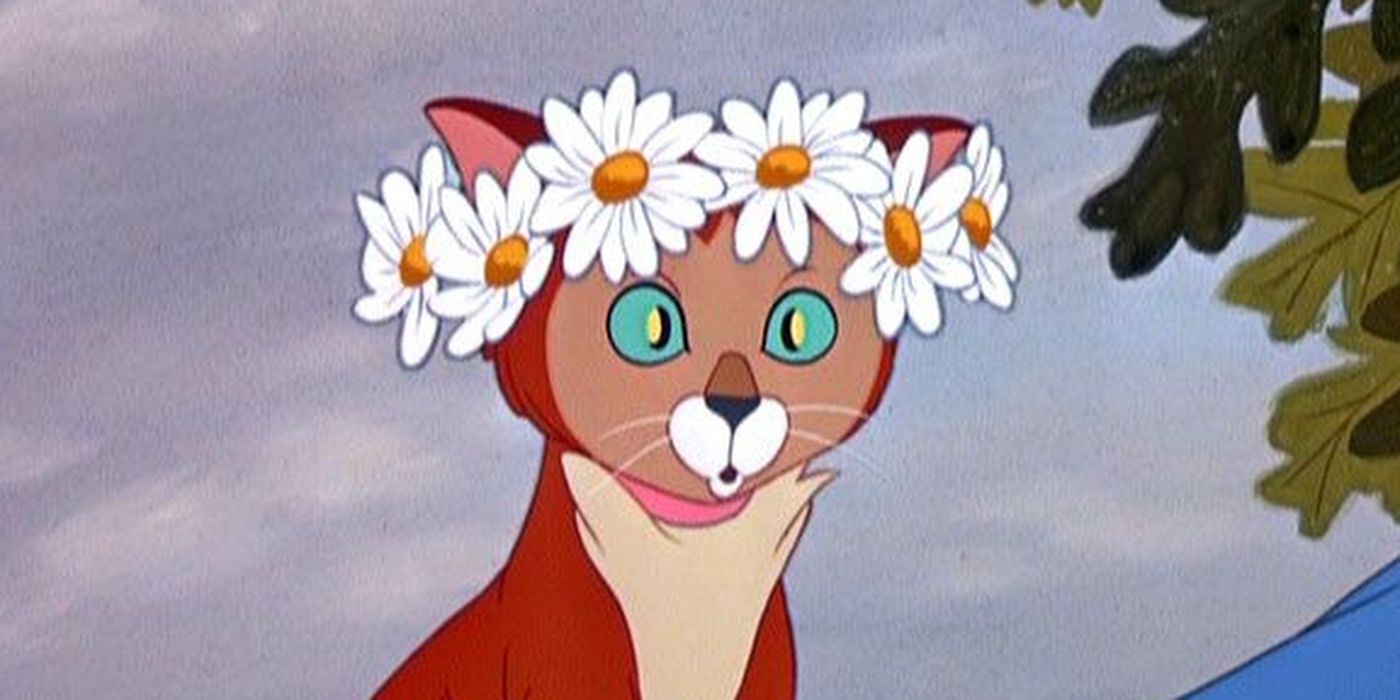
One detail that Disney did include in his version that the book actually never showed was Dinah, Alice's kitten who we see sitting in her lap as she and her sister lounge by the riverbank. This might not seem like a massive difference, but go through the text again and see if she's there.
While it's true that Dinah is mentioned as Alice is falling slowly down the rabbit hole, at no point was the cat, not kitten, ever mentioned in the context of that moment. In fact, the only time Dinah is ever seen is in Through the Looking Glass. It's a minor change, but definitely not in the original book.
9 The Talking Door

We're willing to allow Disney to take some serious creative license with this one, simply because if they didn't, Alice would have literally been in an empty room talking to herself. Obviously, that wouldn't make for a very interesting sequence, but Disney does do something kind of clever with the idea.
In the book, Alice is trying to find her way through a small door into an enchanted garden. Before she drinks from the bottle and eats the EAT ME cake, she has a sort of conversation with herself. Disney takes elements of her monologue and divides parts of it between her and the doorknob. Not a literal translation, but creative.
8 Tweedle Dee and Tweedle Dum
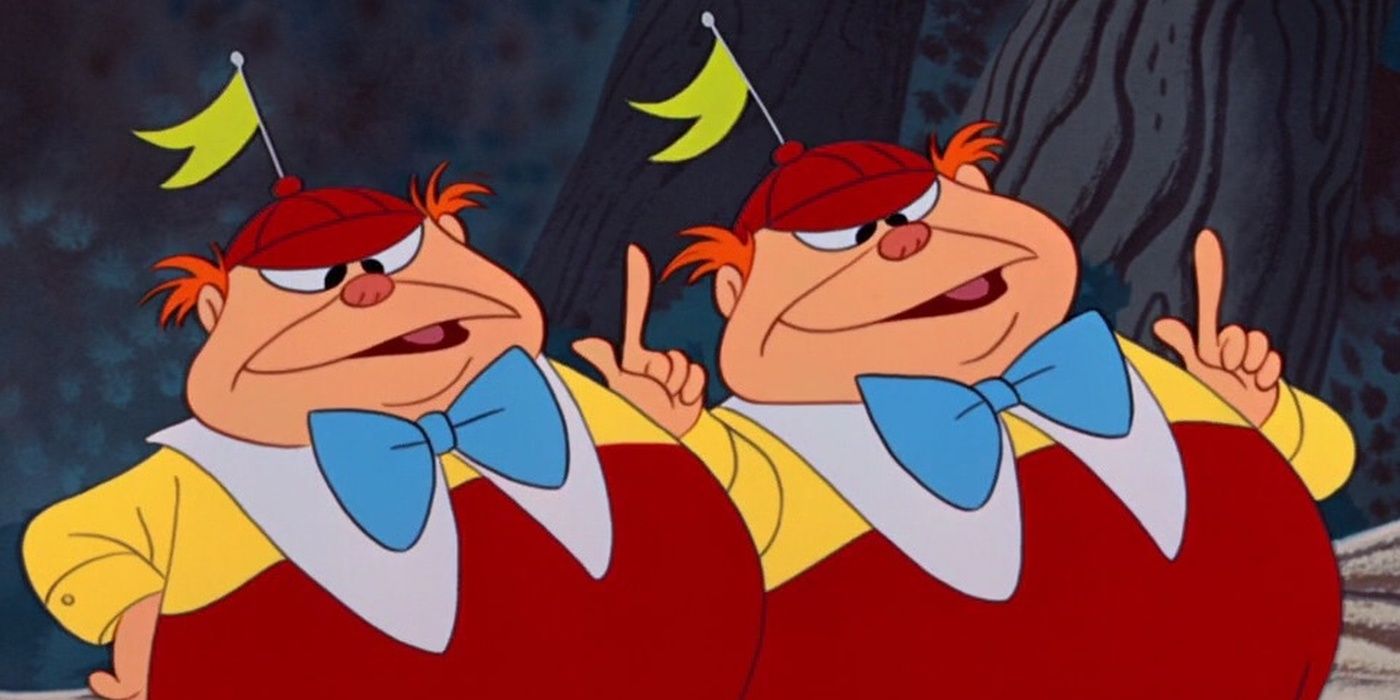
Now we come to our first major discrepancy between the film and the original book. In Carrol's Alice's Adventures in Wonderland, Tweedle Dee and Tweedle Dum, along with the Walrus and the Carpenter, appear absolutely nowhere in the text. But they do appear in the sequel.
In Through the Looking Glass, the interaction between Alice and the Tweedles is surprisingly similar. She meets them in the forest, they tell her about the Walrus and the Carpenter, have a battle, and Alice moves on. In Disney's version, the battle is replaced by them reciting Old Father William, but is otherwise unchanged.
7 The Incident at the White Rabbit’s House is a Much Bigger Deal
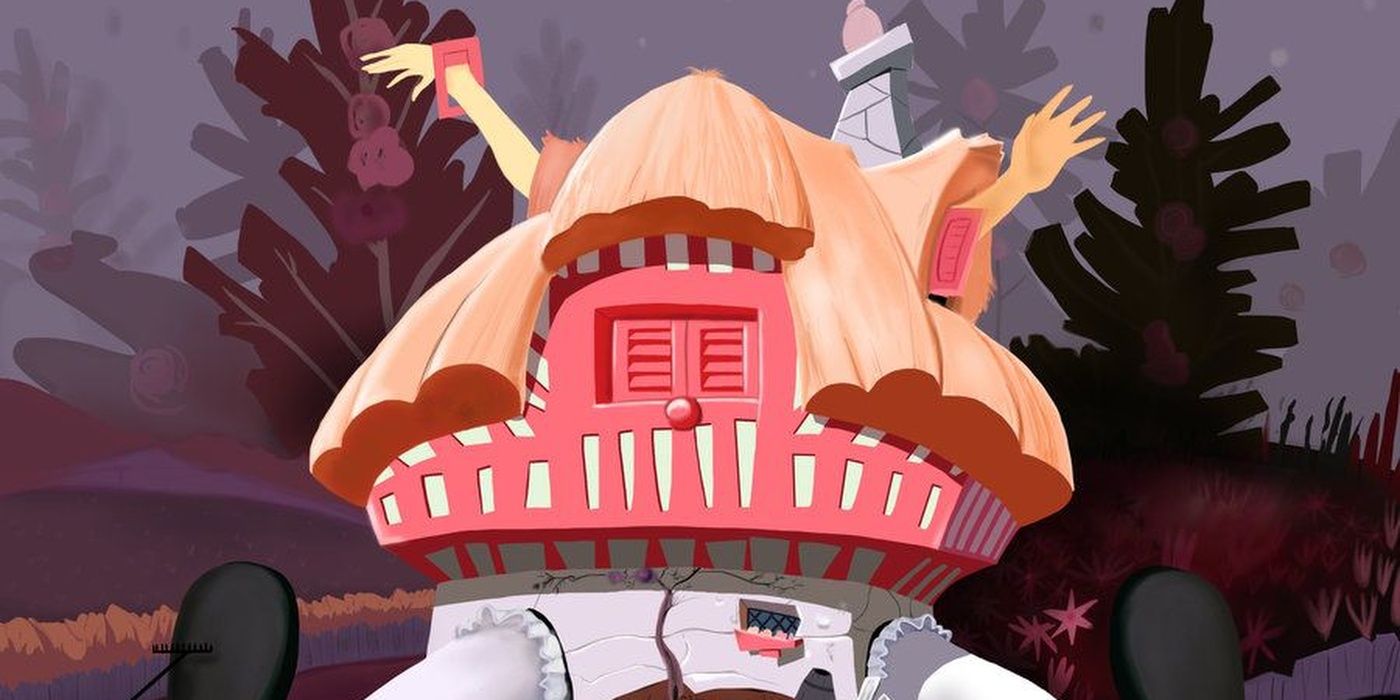
In the film, when Alice eats the cookie in the White Rabbit's house while trying to find his gloves for him, she grows into an enormous size, causing various limbs to come shooting out of doors and windows. Disney's version is much more light-hearted and cartoonish affair.
Carrol's version, however, shows the rabbit and some of his animal friends forming an angry mob when Alice sends Bill the Lizard shooting out the chimney. They throw stones at her through the windows which turn into cakes, which Alice eats, and you pretty much know the drill after that. She shrinks and moves on to the next encounter.
6 The Flowers Do Not Appear in the Book, but Golden Afternoon Does
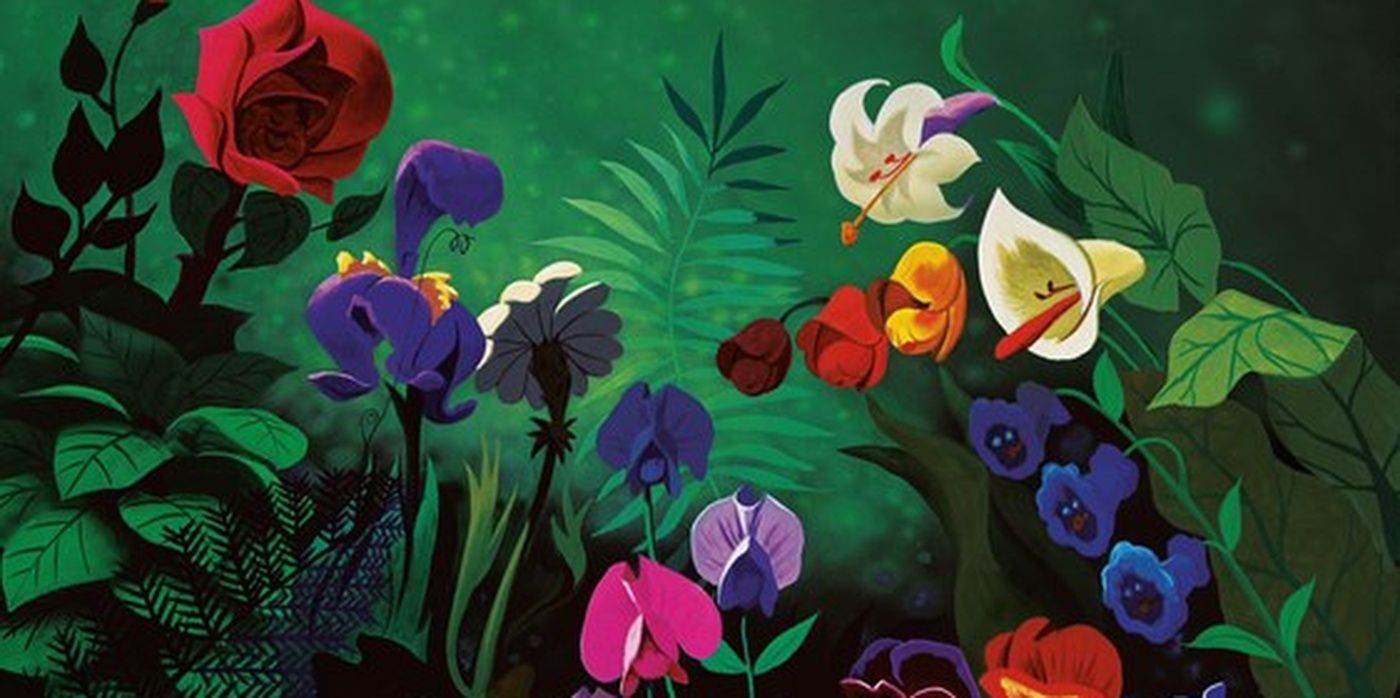
Alice's next encounter in the film is another scene that happens nowhere in the original book, but the song sang by the talking flowers, "All in the Golden Afternoon," does make an appearance in the very first pages of the text. Disney's songwriters pulled the title from one of Carrol's poems, coincidently of the same name.
The song itself has very little to do with Carrol's poem, but the talking flowers do appear in Through the Looking Glass and while they're somewhat cliquey, they do share similarities with the text. The bits with the rocking-horse-flies and bread-and-butterflies also carry over, but the literary quality is lost in the animation.
5 The Caterpillar is much More of a Snob in the Film
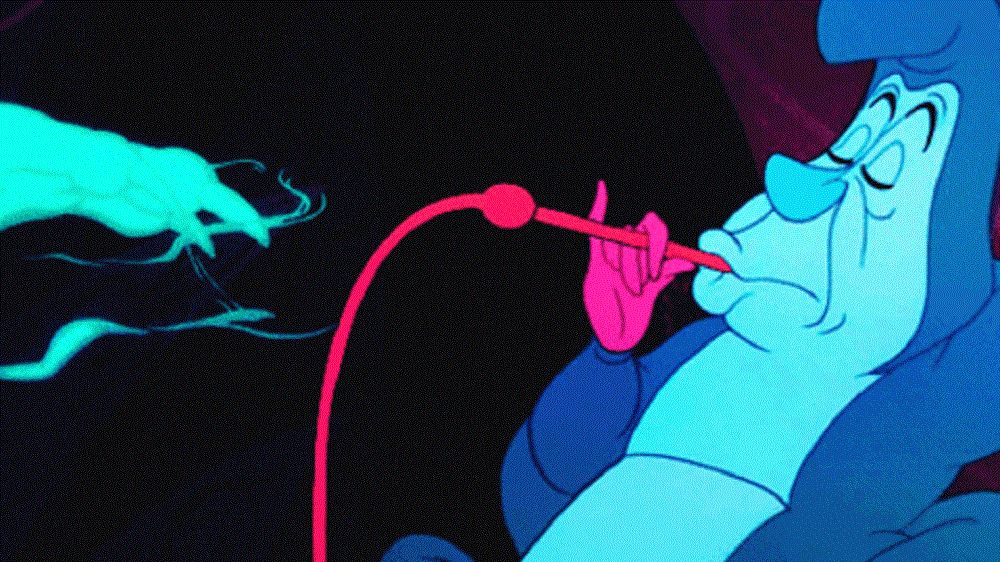
One of the book's most famous scenes involves Alice shrinking down to three-inches-high and encountering a giant, hookah-smoking caterpillar. During this exchange, the caterpillar informs Alice how to change size via mushroom and has her recite You are Old, Father William. He does this in a slow and aloof manner, but Disney goes a different way.
Disney's caterpillar, though visually similar, has a much less welcoming persona. Unlike the book, he's not mellowed out on whatever he's puffing on in his pipe but has a more conceited and snooty attitude. When he's not smoking letters of the alphabet, he's talking down to Alice like she isn't worth his smoke break.
4 There is No Unbirthday Party
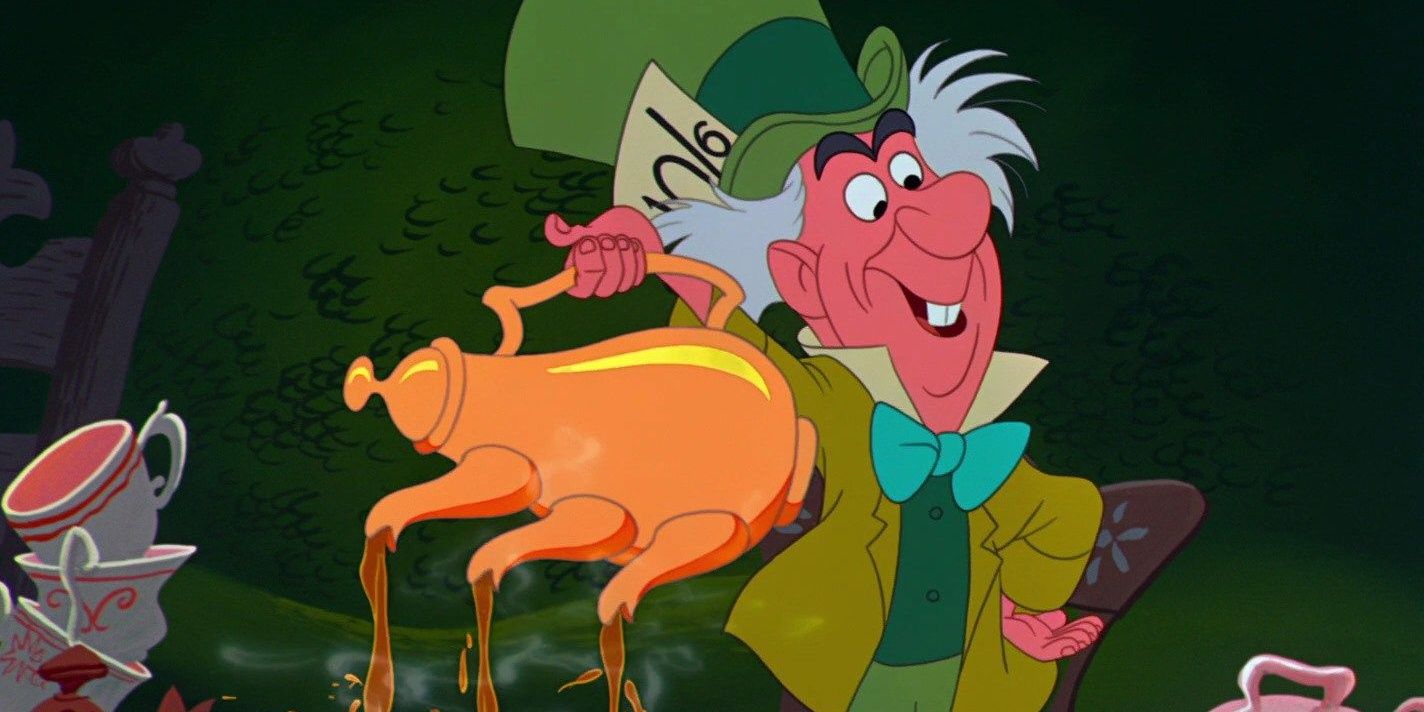
Hold your fire, we need to explain this one. Though the Hatter, the Hare, and the Doormouse all appear in the book and they do in fact have a nonsensical tea party that tries Alice's patience and grants us some comedic gold. There is no unbirthday party in any of the Alice books.
Though there is mention of an unbirthday presence from Humpty Dumpty in Through the Looking Glass, the Hatter's Tea Party is mainly there due to Hatter's feud with Time, forcing him to be stuck in teatime forever. That's a little dark for a kid's book don't you think?
3 The Cheshire Cat is Much More Antagonistic in the film
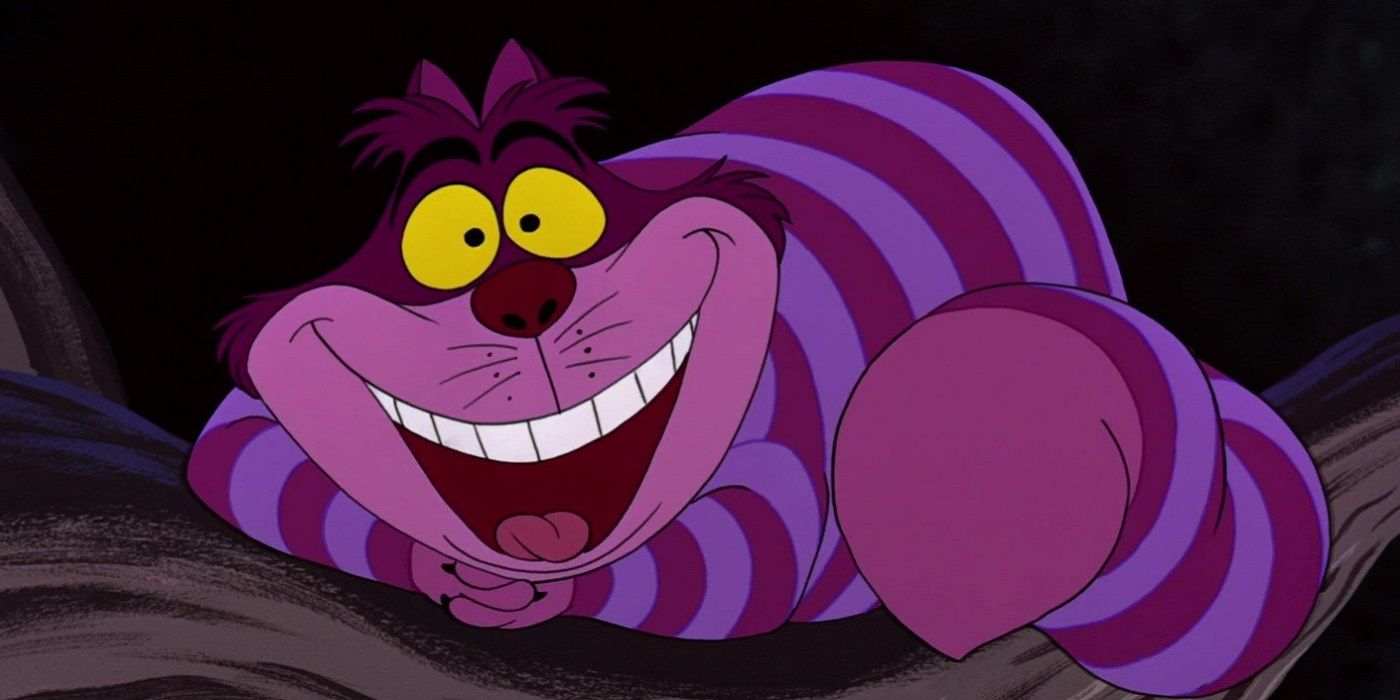
Next to the Mad Hatter, the Cheshire Cat is probably the most iconic character in the book, but he only appears three times in the text. Once at the Dutchess's house, once while Alice is in the Tulgey Wood, and once during the Queen's croquet game, but only as a floating head. In the book, he has more of a teasing nature, but not malicious.
Disney's Cheshire Cat is much more of a prankster and troublemaker, intentionally setting the queen's temper off and causing trouble at the trial. He's not exactly a villain, more like a force of chaos or a Looney Tunes character, take your pick.
2 The Queen’s Court is much larger

In the final act of the film, Alice comes to a final confrontation with the Queen of Hearts, but it seems she's the only suit that came out to play croquet. In the book, the Queen of Hearts is also accompanied by her pompous husband, the King of Hearts, along with the rest of the deck.
The Queen has an entire entourage made up of the suits and royals in the pack. She even has her own executioner in the original illustrations. But with an army like she's got in the Disney version, who needs competition for the crown?
1 Alice is Much More Intelligent
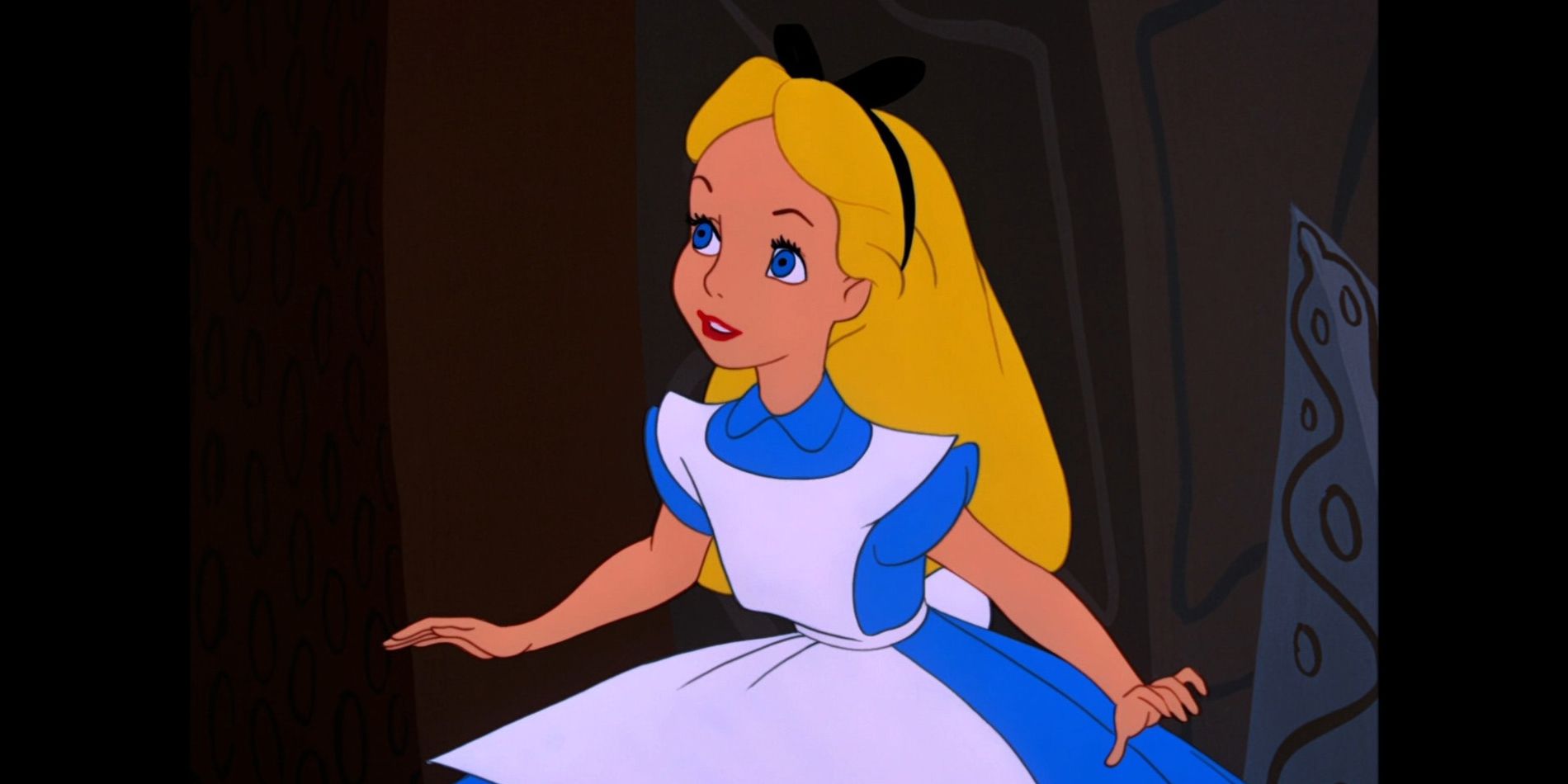
The biggest difference between the book's Alice and Disney's Alice is definitely a matter of intelligence. We don't mean Disney's Alice isn't smart or lacks anything in the brains department, but if you compare the two side-by-side, Carrol's Alice is more verbose, logical, and practical whereas Disney's Alice is more of an observer than a thinker.
Disney's Alice is the blank slate for the weird cast to bounce off of where the book's Alice is like Dante in The Inferno, she works with logic and follows the rules in a mad world. Just keep in mind that Wonderland is the star of the show.
from ScreenRant - Feed https://ift.tt/38wHXK0

No comments: